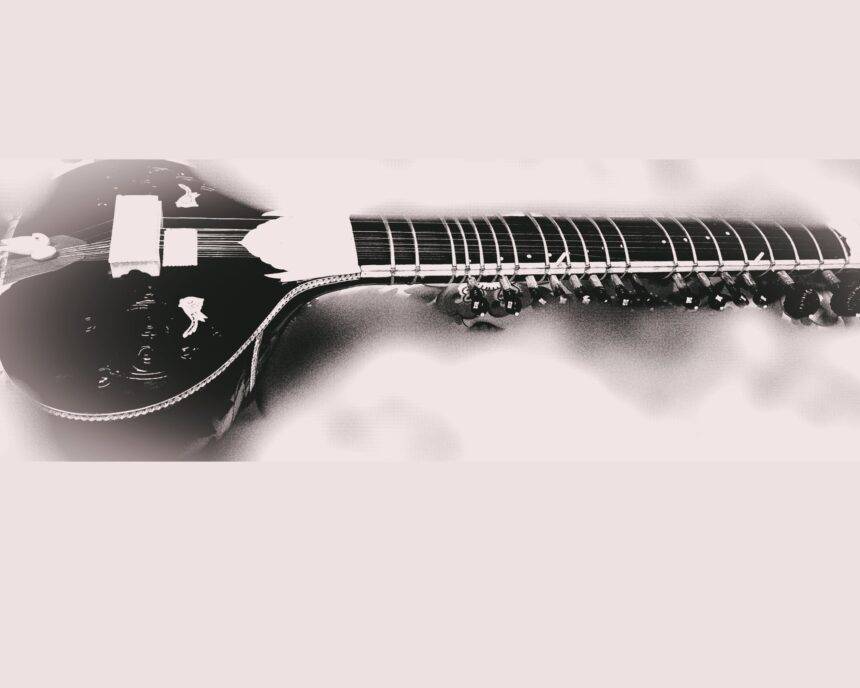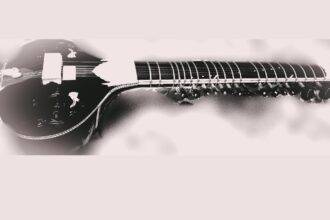The Evolution of the Instrument
Evolution is a process of change over time, which involves the development and diversification of anything on Earth. Evolutionary processes have led to the emergence of new and the extinction of others and have shaped diversity. Sitar, from an accompanying instrument to a solo instrument, has a long journey of evolution. It has inclusions and removals in different phases of history. These changes in different phases can be influenced by several factors, including:
Cultural influences: Cultural influences can play a significant role in the invention of a musical instrument. Music is an essential part of many cultures, and the instruments that are developed within these cultures often reflect the unique characteristics and values of the society. Instruments can also be influenced by the social and political climate of a society.
Musical trends: The changing trends in music can also influence the invention of new instruments. As new musical styles emerge, musicians and instrument makers may seek to create instruments that can produce new and unique sounds.
Inventor’s creativity: The creativity and ingenuity of an inventor can also play a significant role in the invention of a new musical instrument. Inventors who are passionate about music and deeply understand how instruments work may be more likely to develop new and innovative designs.
Accessibility: The availability and affordability of materials and manufacturing processes can also impact the invention of musical instruments. In some cases, the invention of a new instrument may be hindered by the lack of resources or access to specialized manufacturing techniques.
Technological advances: Technological advancements in materials science, acoustics, and electronics can lead to new musical instruments or improvements to existing ones. For example, the development of electronic instruments such as synthesizers and digital keyboards has revolutionized modern music.
Any musical instrument, at least in India, can not just be explained with the technicalities; it has stories and emotions behind it. So with sitar. The sitar is a stringed musical instrument that originated in India, and its invention can be traced back to the 13th century. The philosophy behind the invention of the sitar was to create an instrument that could express the essence of Indian classical music and convey the emotions and moods of the ragas (musical modes) that it was meant to play. The philosophy behind the design of the sitar was to create an instrument that was capable of producing a rich and complex sound with a range of tonal colors and expressive capabilities. The sitar was designed to be played in a seated position, with the strings resting on the player’s lap and the player using a combination of plucking and sliding techniques to produce the desired sounds. The sitar’s invention was also influenced by India’s spiritual and philosophical traditions. The sitar was seen as a tool for expressing the soul and connecting with the divine. Its music was believed to have the power to heal, uplift, and transform the listener, and the player was seen as a channel for this spiritual energy. The philosophy of the invention of the sitar was to create a musical instrument that could express the essence of Indian classical music, convey the emotions and moods of the ragas, and serve as a tool for spiritual and emotional transformation. Sitar has been influenced by a wide range of musical forms throughout its history. Its versatility and adaptability have allowed it to be used in many different musical genres and helped establish it as one of the most iconic instruments in Indian classical music. Undoubtedly sitar has its roots in Indian classical music and has been influenced by this musical form throughout its development. The sitar has been used to play folk music in different regions of India and has been adapted to suit the needs of these different styles.
The aesthetics of the sitar invention can be seen through different aspects of the instrument, including its design, construction, and sound it produces. The aesthetic considerations that went into the invention of the sitar are:
Design: The sitar is distinctive, with a long neck and a resonating chamber made from a gourd. The instrument’s shape is designed to create a unique sound and allow the musician to play complex ragas and melodies.
Materials: The materials used to construct the sitar are also an important aesthetic consideration. The instrument’s body is typically made from teak wood, known for its strength and durability. The frets are steel, and the strings are usually metal or silk.
Ornamentation: The sitar is often decorated with intricate designs and patterns, including inlaid mother-of-pearl and ivory. These decorative elements not only add to the instrument’s aesthetic appeal but also serve to reinforce the cultural and historical significance of the sitar.
Sound: The sound of the sitar is perhaps its most important aesthetic consideration. The instrument produces a unique and complex sound characterized by resonance and sustain. The sitar’s ability to produce a wide range of tones and timbres allows the musician to express a wide range of emotions and moods.
Overall, the aesthetics of the sitar invention are a reflection of the cultural and musical traditions of India and are a testament to the skill and craftsmanship of the instrument makers. The sitar’s distinctive design and sound have made it one of the most recognizable and beloved instruments in the world of music.
Considering all these factors, the instruments have taken different alterations and names to the basic lute structure of the instrument. The different types of the instrument will be discussed in the coming sections.



